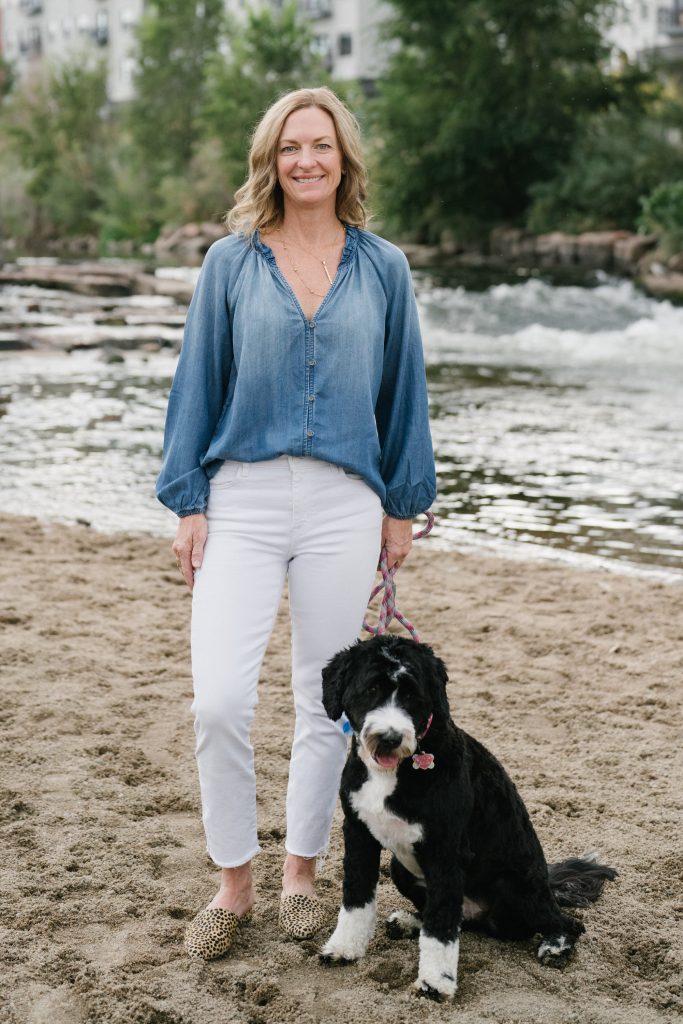Downward-facing Dog is one of the most widely known yoga poses. Even if you aren’t a regular yoga practitioner, you are probably familiar with this pose which looks like an upside-down letter “V”. As common as Downward-facing Dog is, it is often assumed and therefore untaught in many yoga studios. However, it is a foundational posture that warrants going over the benefits, form, and contraindications.
Benefits of Downward-facing Dog
Downward-facing Dog is a multi-faceted yoga posture and functions simultaneously as an assessment pose, transitional pose, resting pose, strengthening pose, and inversion pose. Adho Mukha Svanasana, as Downward-facing Dog is called in Sanskrit, works to strengthen the core, improve circulation, and provides an incredible full-body stretch. Some other benefits of Down Dog are that it works to:
- Strengthen hands, wrists, and core
- Tone the arms and legs
- Open and strengthen the shoulders in flexion
- Stretch hamstrings, low back, calves, and Achilles tendon
- Reduce tension and headaches by elongating the cervical spine
- Boost blood flow to the brain through the gentle inversion
Something that sets Downward-facing Dog apart from other yoga postures is that it is both a stretching and a strengthening posture, creating balance for the mind and body. Done correctly, you will feel Downward Facing Dog in your hands, arms, shoulders, back, calves, hamstrings, and even the arches of your feet.

Getting Started with Downward-facing Dog
If you are new to yoga, or just want to double-check your form in Downward-facing Dog, below is a step-by-step guide to setting up the posture correctly.
- Start in a plank with your shoulders over your hands, core engaged, feet hip-width distance apart, and toes tucked.
- Lift your hips back and up to form a pyramid or inverted “V” shape with your body. Focus on creating a straight line from hands to hips. This may mean you need to bend your knees significantly and even pick your heels up off the ground. (Note: Your heels DO NOT need to touch the ground in this pose. Instead, focus on a flat back)
- Squeeze your upper thighs and abdominal muscles toward each other.
- Rotate biceps slightly forward to open your shoulders and release tension in the neck.
- Squeeze your arms and shoulders toward each other to engage the upper body.
- Relax your neck to gaze back at your feet.
- Release heels toward the floor to stretch the calves.
- Hold the posture, inhaling as you lengthen and lift, and exhaling as you deepen the stretch and increase engagement.
Adjustments to Make
As you are building your strength, you may find it challenging to hold Downward-facing Dog for long periods of time. Consider holding the posture for 2-3 breaths and then place your knees to the mat and rest in child’s pose for a few breaths. Repeat this process to build strength and flexibility. If you suffer from tight hamstrings, bend your knees a lot in Down Dog and, over time, your hamstrings will lengthen.
Another way to bring more ease to this posture is to bring the ground up to you by using blocks. Place blocks on any level under your hands to take some of the load off your wrists and arms. The higher the block setting, the easier the pose will be.
You should avoid doing Downward-facing Dog if you have an existing wrist or shoulder injury or if you suffer from carpal tunnel syndrome. Remember that Down Dog is an inversion so if you have vertigo or high blood pressure you should also exercise caution or avoid this pose.
Want more alignment tips with demonstrations on how it’s done? Grab our Yoga Alignment course for just $10 and learn about 19 of the most commonly seen poses and how you can adjust your alignment in them.

Erin Entlich is a certified yoga instructor, personal trainer, holistic health coach, and writer. She believes doing good starts with feeling good, which is why she loves helping people weave movement, mindfulness, and healthy eating into their daily lives. Find out more at www.erinentlich.com.